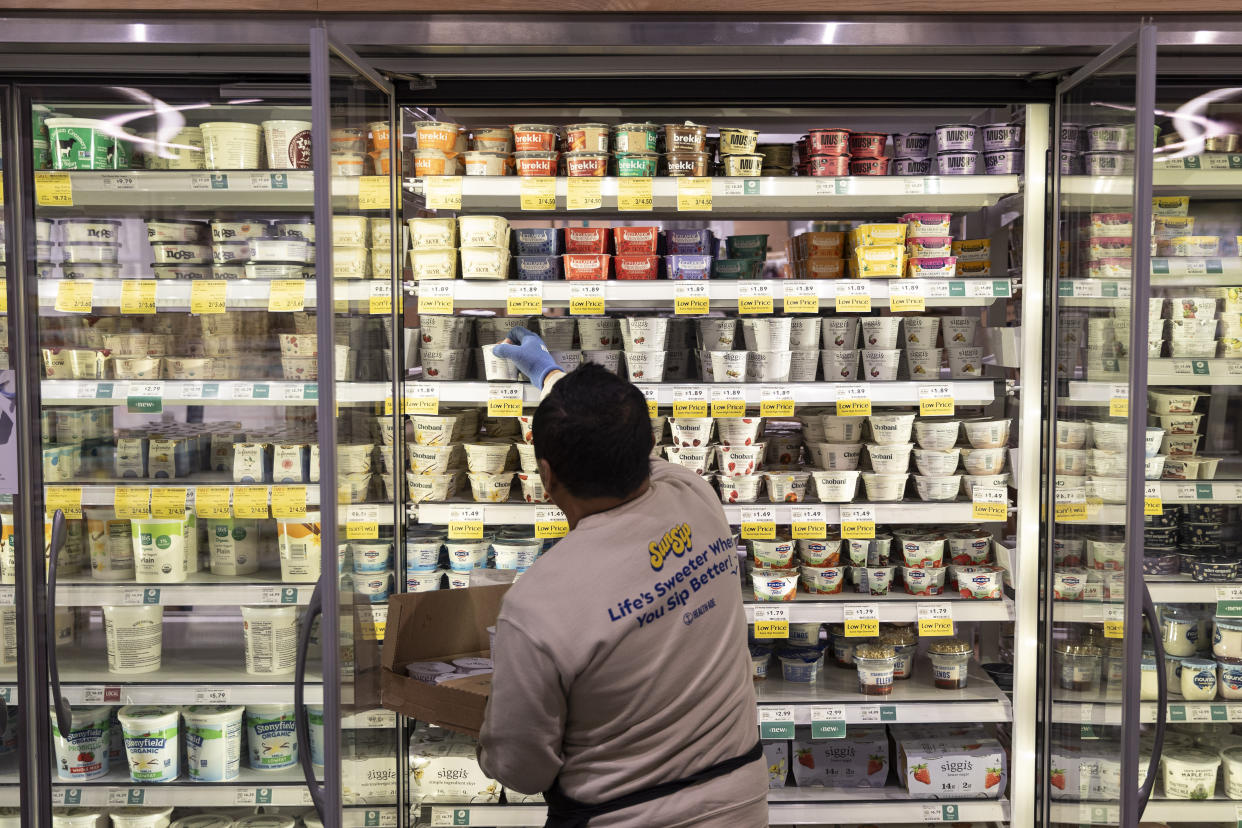Here’s the good news in a troubling inflation report
It’s not dead yet.
Inflation dropped sharply in 2023 but it has reasserted itself in 2024, with unsettling implications for shoppers, financial markets, and President Joe Biden’s reelection odds.
The annualized inflation rate hit 3.5% in March, up from 3.2% the month before and 3.1% in January. The Federal Reserve’s inflation target is 2%, and for much of the last 12 months, it looked as if the Fed was making steady progress toward that goal. Now, maybe not.
Starting in 2022, the Fed raised interest rates 11 times — its usual tactic for battling inflation — by a total of 5.25 percentage points. The last rate hike was in July. With inflation broadly declining since then, investors have been hoping the Fed is finished hiking rates. At the beginning of 2024, most analysts expected meaningful rate cuts this year.
That looks increasingly unlikely. In January, the odds of rate cuts in 2024 were 100%, according to the CME Group’s FedWatch tool. Those odds have now fallen to 89%, with 95% odds that rate cuts total one percentage point or less. That’s a big disappointment to investors, who were hoping for deeper rate cuts sooner, and it explains why a five-month stock market rally stalled at the end of March as investors began accounting for stubborn inflation.
Read more: What the Fed rate decision means for bank accounts, CDs, loans, and credit cards
But not all is gloom. There’s actually some good news for shoppers in the latest inflation numbers, along with a reasonable chance that the resurgence of inflation won’t last. The buried gem in the otherwise troubling March inflation numbers is that goods inflation has essentially disappeared. The inflation rate for commodities in March was just 0.6% year over year, and the goods inflation rate has been under 1% for six months in a row.
Earnings are rising by 4.1% on an annualized basis, which means that in terms of goods, consumers are regaining purchasing power lost after COVID-era supply-chain disruptions and surging demand from stuck-at-home consumers sent goods prices soaring. Goods inflation peaked at 14.2% in March of 2022, so the catchup is welcome.

Drop Rick Newman a note, follow him on Twitter, or sign up for his newsletter.
The most nettlesome goods inflation has been food, which is obviously a staple. Even that inflation is abating, with prices up just 1.2% year over year in March. Past price hikes are likely here to stay because labor costs for producing, processing, and transporting food have gone up. But again, paychecks are now growing by more than costs, allowing shoppers to catch up.
There’s outright deflation in several areas. Since 2021, Yahoo Finance has tracked inflation in 28 categories that represent most things families spend money on. In seven goods categories — toys, appliances, furniture, schoolbooks, used vehicles, electronics, and new vehicles — prices are now falling. In seven other categories — clothing, prescription drugs, groceries, gasoline, pet products, alcohol, and household energy — the annual change in price levels is less than earnings growth.
Above-average inflation is now being driven entirely by the service sector, where inflation is still uncomfortably high at 5.3%. Even there, anomalies are much of the story. One outlier is auto insurance, up a mind-boggling 22.2% year over year. That reflects the higher cost of cars during the pandemic, which means repairs now cost more. New cars also feature more sophisticated electronics, which are costlier to fix after an accident. Plus, drivers went faster during COVID and are still speeding, making accidents worse and more expensive.
The other big driver of services inflation (and overall inflation) is rent, up 5.7% year over year. But the government’s rent numbers are dated and don’t fully reflect the cost of new leases, which have dropped since 2022, according to real-time data such as the Apartment List rent index. Economists expect official data to eventually reflect the lower cost of new leases, which will show up as lower rent and housing inflation in the future.
Aside from rent and car insurance, prices in most other categories are getting back to normal. In 21 of the 28 categories we track, inflation is lower than wage growth and also less than 3%. That suggests inflation will continue to moderate, even if the headline number is a bit too high for the Fed to relax.
President Biden has been counting on a sharp drop in inflation to boost voter attitudes and improve his reelection odds in November. He acknowledged that it's taking longer than he would like, saying in an April 10 statement, “We have more to do to lower costs for hardworking families.” Relief is coming, however, whether it's on Biden's timetable or not.
Read the latest news on inflation and what it means for the Federal Reserve:
Higher gas prices helped drive hotter-than-expected inflation in March
Another hot inflation reading fans fears Fed will push back rate cuts
Why auto insurance costs are rising at the fastest rate in 47 years
Rick Newman is a senior columnist for Yahoo Finance. Follow him on Twitter at @rickjnewman.
Read the latest financial and business news from Yahoo Finance
